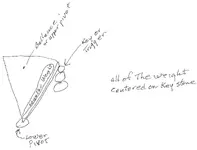The traps you speak of are there to protect a cache site. Simply learn to recognize there for what they are and leave them alone.
Usually these traps are easily recognizable as they are made to induce you to dig there. For example there may be a dozen stone faces of people or animals looking at one spot in the ground.
Usually if you sit down at such a trap's will see the warning signs placed there by the builders warning you it is a trap. For example the most common warning signs they placed at a trap are: Lightning Bolt, Snake, Broken Heart, Horse / Horse head, Tombstone, Wolf.
These markers (D. Traps) usually give you exact directions to the cache site / or a map to the cache site---once they are distroyed--and they are destroyed if you trip them / set them off --then you can never read the directions they are giving kind of like burning up a treasure map--once you burned it--it is gone.
Now here is the secret to entering a Spanish Cache site: the entrance--will look like absolutely nothing is there!!
A trap which will ruin you day--will have all kinds of inviting stuff to catch your attention--and get you anxious to dig there. So think fast--and move very slowly--look at your site from all angles and use what is mighty uncommon; your common sense.
Barton
 ) because I didn't know what to look for or how to handle a death trap. Thanks.
) because I didn't know what to look for or how to handle a death trap. Thanks. ) because I didn't know what to look for or how to handle a death trap. Thanks.
) because I didn't know what to look for or how to handle a death trap. Thanks.


 You must have a lot of experience working around death traps. If you have any "war stories" I'd like to hear about it.
You must have a lot of experience working around death traps. If you have any "war stories" I'd like to hear about it.
